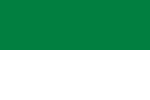Yacuiba is a city in southern Bolivia and the capital city of Gran Chaco Province in the Tarija Department. It lies three kilometers from the Argentine border. It has a population of approximately 80,000 and lies 620 to 680 m (2,034–2,231 ft) above sea level. Yacuiba is one of the cities of fast growth population in Bolivia due to the commerce and boom in hydrocarbon exploitation. It was part of Salta Province of Argentina until its cession to Bolivia in 1900.
Yacuiba | |
|---|---|
City | |
 | |
| Coordinates: 22°00′55″S 63°40′38″W / 22.01528°S 63.67722°W | |
| Country | |
| Department | Tarija |
| Province | Gran Chaco |
| Municipality | Yacuiba Municipality |
| Canton | Yacuiba Canton |
| Elevation | 650 m (2,130 ft) |
| Population (2012)[1] | |
| • Total | 108,578 |
| Time zone | UTC-4 (BOT) |
| Website | Official website |
Due to its position on the frontier, Yacuiba is a major center of commerce. Across the border lies Salvador Mazza, with which it forms a conurbation.
The town has direct connections by road with both Tarija and Santa Cruz. It also has an international airport (BYC). Although, Yacuiba has still a low population it managed to obtain one football team in the Bolivian professional league, Petrolero.
Climate
editYacuiba has a dry-winter humid subtropical climate (Köppen: Cwa), a result of its slightly cooler temperatures when compared to surrounding regions because of its modest elevation and the monsoonal effects of the surrounding area.
| Climate data for Yacuiba, elevation 580 m (1,900 ft) | |||||||||||||
|---|---|---|---|---|---|---|---|---|---|---|---|---|---|
| Month | Jan | Feb | Mar | Apr | May | Jun | Jul | Aug | Sep | Oct | Nov | Dec | Year |
| Mean daily maximum °C (°F) | 31.4 (88.5) |
30.4 (86.7) |
28.7 (83.7) |
25.6 (78.1) |
23.1 (73.6) |
21.1 (70.0) |
22.5 (72.5) |
25.6 (78.1) |
27.9 (82.2) |
30.4 (86.7) |
31.0 (87.8) |
31.5 (88.7) |
27.4 (81.4) |
| Daily mean °C (°F) | 25.3 (77.5) |
24.6 (76.3) |
23.4 (74.1) |
20.7 (69.3) |
17.9 (64.2) |
15.5 (59.9) |
15.2 (59.4) |
17.5 (63.5) |
20.2 (68.4) |
23.3 (73.9) |
24.3 (75.7) |
25.2 (77.4) |
21.1 (70.0) |
| Mean daily minimum °C (°F) | 19.3 (66.7) |
18.9 (66.0) |
18.1 (64.6) |
15.7 (60.3) |
12.7 (54.9) |
9.9 (49.8) |
8.0 (46.4) |
9.4 (48.9) |
12.4 (54.3) |
16.2 (61.2) |
17.7 (63.9) |
19 (66) |
14.8 (58.6) |
| Average precipitation mm (inches) | 203.1 (8.00) |
189.3 (7.45) |
192.2 (7.57) |
99.4 (3.91) |
33.9 (1.33) |
18.0 (0.71) |
6.0 (0.24) |
7.4 (0.29) |
10.0 (0.39) |
50.1 (1.97) |
114.7 (4.52) |
173.3 (6.82) |
1,097.4 (43.2) |
| Average precipitation days | 10.5 | 10.1 | 11.0 | 10.1 | 7.2 | 5.4 | 2.8 | 1.5 | 2.2 | 5.3 | 8.1 | 9.6 | 83.8 |
| Average relative humidity (%) | 71.8 | 74.3 | 78.1 | 80.7 | 79.4 | 77.9 | 69.0 | 59.1 | 54.6 | 57.5 | 62.9 | 67.7 | 69.4 |
| Source: Servicio Nacional de Meteorología e Hidrología de Bolivia[2][3] | |||||||||||||
Etymology
editThe city's name is derived from the Guaraní yaku-iba, meaning roughly "fowls' watering hole"
References
edit- ^ "World Gazetteer". Archived from the original on 2013-01-11.
- ^ "Base de datos Sistema Meteorológico–SISMET" (in Spanish). Servicio Nacional de Meteorología e Hidrología de Bolivia. Archived from the original on 7 June 2018. Retrieved 15 June 2024.
- ^ "índices climáticos para 149 estaciones meteorológicas en Bolivia" (in Spanish). Servicio Nacional de Meteorología e Hidrología de Bolivia. Retrieved 15 June 2024.

